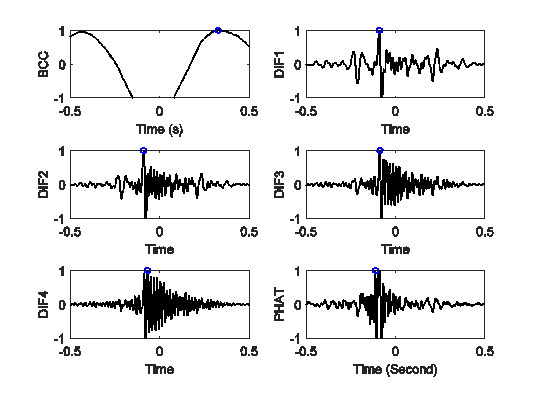
Currently, pipeline networks across the world are facing the challenge of improving leak detection technologies in urban environments. There is an imperative to locate accurately leaks in buried water pipes to avoid serious environmental, social and economic consequences.
Prof. GAO Yan and her colleagues from the Institute of Acoustics (IOA) of the Chinese Academy of Sciences proposed a new method for accurately locating water leaks in urban pipeline networks. Their findings were published online in Mechanical Systems and Signal Processing.
Acoustic methods using vibro-acoustic sensors are commonly adopted for the detection and location of water leaks, including simple listening sticks, ground microphones, acoustic loggers, and leak noise correlators. These methods are based on the knowledge of low-frequency propagation characteristics of the fluid-borne wave in the water distribution pipes.
Cross-correlation is considered as a powerful tool for identifying the location of a leak once the leak source is located in a particular area of the pipe network.
The researchers investigated the use of differentiation process in cross-correlation, termed DIF, to improve the accuracy of the time delay estimate.
Compared to the conventional correlation techniques, including the basic cross-correlation and pre-whitening generalised cross-correlation, the newly proposed DIF method yields many benefits. The differentiation process via the DIF method can be implemented directly on the received signals without requiring spectral information of the noise and leak signals.
"In the case when the statistical characteristics of the signals cannot be known a priori, the DIF can be adopted as the most attractive way in order to obtain a discernible peak of the cross-correlation function," said GAO Yan.
The DIF is particularly useful in water leak detection for two main reasons. An immediate benefit of the DIF is that filtering operations may no longer be required, while those operations must be taken into account in the available correlators. Furthermore, the reflection effects that mainly appear at lower frequencies can be largely eliminated by the differentiation process.
The DIF method changes the characteristics of the pipe system so that the pipe effectively acts as a band-pass filter. Given an appropriate differentiation order, a more pronounced and reliable peak can be obtained in the cross-correlation result.
Field test from actual PVC water pipes demonstrated that the DIF outperforms the conventional cross-correlation methods (Figure 1). GAO said that implementation of the differentiation process in the cross-correlation analysis was a promising tool for water leak detection in urban pipeline networks.
This research was supported by the National Natural Science Foundation of China and CAS "Hundred Talents Program".

Figure 1. Comparison of various cross-correlation methods of water leak signals without filtering operations. (Image by IOA)

86-10-68597521 (day)
86-10-68597289 (night)

86-10-68511095 (day)
86-10-68512458 (night)

cas_en@cas.cn

52 Sanlihe Rd., Xicheng District,
Beijing, China (100864)

